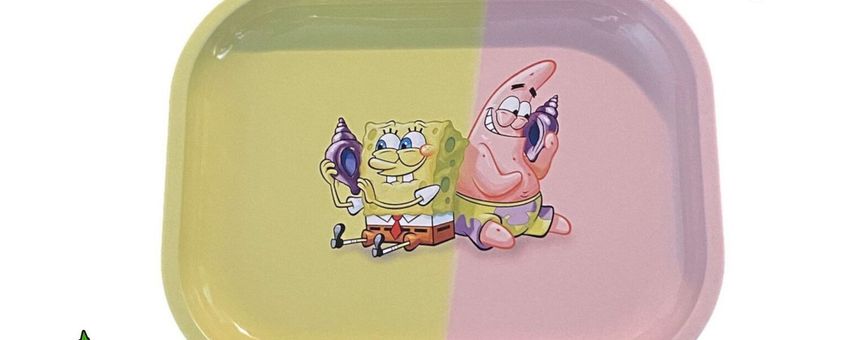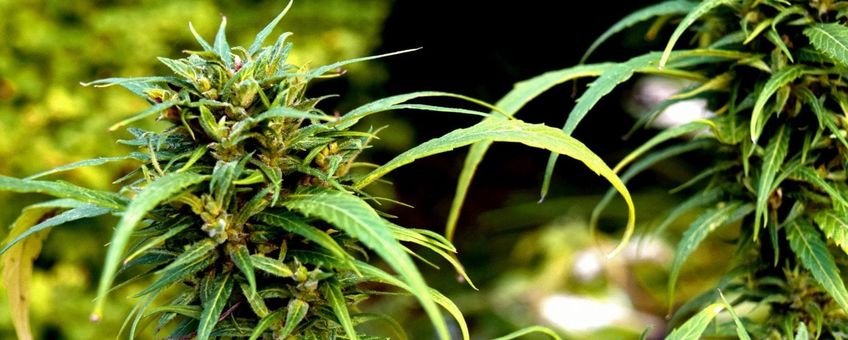

Types of Cannabis Plants: Sativa, Indica, Ruderalis
Cannabis is one of the oldest plants known to mankind. Its beneficial properties have been brought to use by wise men of all eras. In today’s modern times too, Cannabis and Cannabis-derived products have begun making their way through the global community, despite the orchestrated stigma revolving around it for years.
“Marijuana”, “Weed”, “Gaanja”, “Hash” and “Pot”, you may have heard people around you refer to the Cannabis plant by these names. So is there a difference between them? Let’s find out!
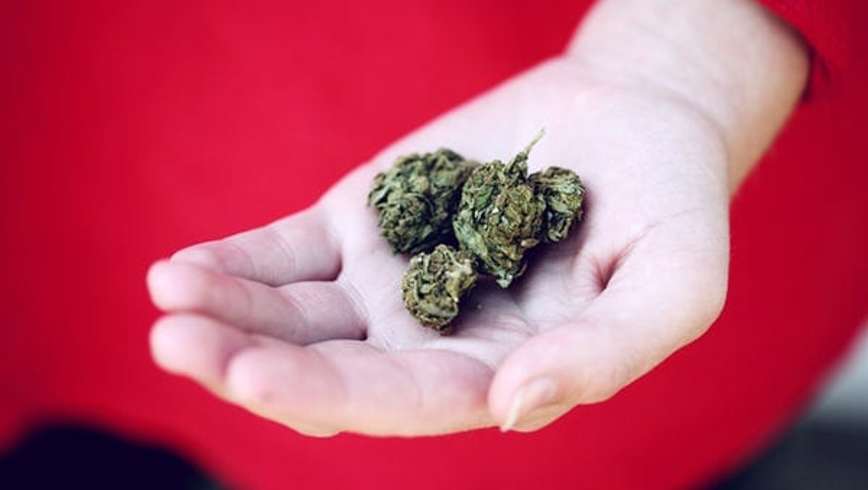
This article is going to cover and breakdown these main sections to better understand the plant:
History of Marijuana
Cannabis Sativa
Cannabis Indica
Cannabis Ruderlis
Industrial Hemp Cannabis Types
Male Cannabis Plants
Female Plants
Hermaphrodite Cannabis Plants
Types of Marijuana Seeds
At The Canna School, we’re determined to bring you helpful information and exclusive insight about what goes around in the cannabis space to help you make informed decisions, saving you both time and money.
Today we’re here to take you through the ins and outs of the Cannabis plant and its various types.
Let’s dive in.
History of Marijuana:
The earliest documented evidence of cannabis use comes from ancient Chinese civilizations where the plant was used for medical, fiber, and land fertility purposes. It is reported that Cannabis, or Dàmá as Chinese call it, was cultivated and harvested in the country for more than 4000 years after which it was declared illegal in 1985.
Although researchers are still doubtful about the origin of the plant, they believe Cannabis originated in the Indian Subcontinent where it still grows almost everywhere naturally due to favorable environmental and soil conditions. However, no matter where it originated from, Cannabis has remained an integral part of cultures throughout human history and continues to remain so.
According to the binomial nomenclature, marijuana is formally identified as Cannabis; or Cannabis Sativa, to be precise. Cannabis is a genus that further has three species, namely Sativa, Indica & Ruderalis that have been recognized while a few remain disputed.
Cannabis Sativa
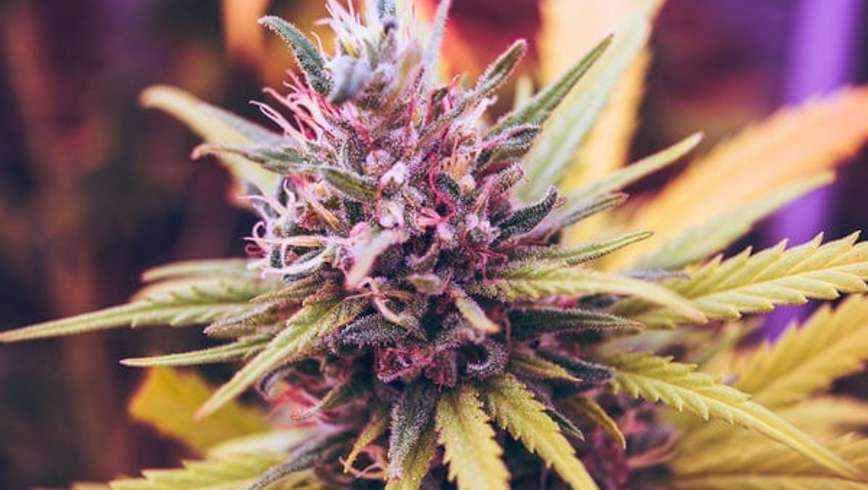
Originally classified as a flowering species of Cannabis back in 1753 by Carl Linnaeus, researchers and pharmacologists have taken a keen interest in this plant. Not only does this plant have recreational uses, but it is also a source of high-quality industrial fiber, food, and medicine.
Both male and female Sativa plants have unisexual flowers with a short flowering span. The staminate (male) plants are usually taller than their counterpart pistillate (male or female) plants. Female plants of Sativa are capable of producing more than a hundred seeds at a time, ensuring species survival in a competitive ecosystem. Male plants, on the other hand, die out after shedding pollen a few weeks prior to seed ripening.
Sativa Constituents:
While the main constituent of Cannabis Sativa is THC (tetrahydrocannabinol), the plant is known to contain more than 500 different compounds. Out of these 500, more than 113 have been identified as cannabinoids, and only a handful of them have been successfully extracted and researched due to their scarce nature. Some of the popular cannabinoids are CBD (Cannabidiol) CBG (Cannabigerol) CBN (Cannabinol).
Cannabis Indica
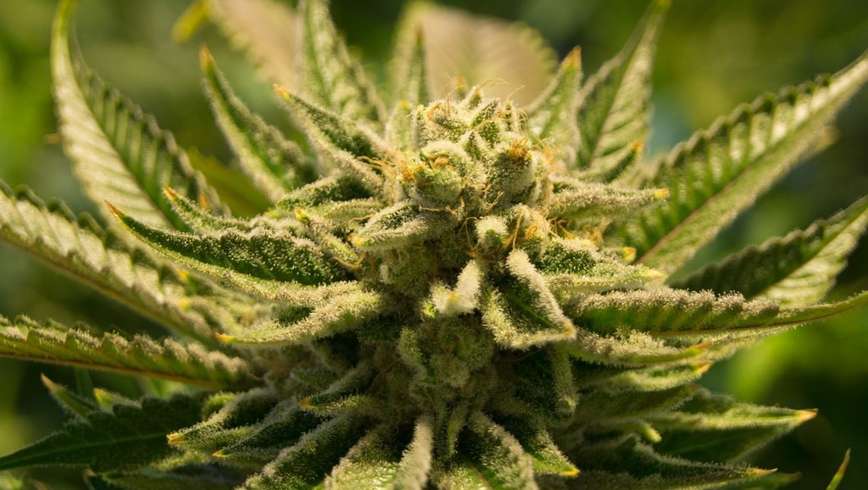
Classified back in 1785 by a French Naturalist Jean-Baptiste Lamarck, Cannabis Indica is known to produce large quantities of THC (tetrahydrocannabinol). Lamarck named this species Indica since he had collected the specimens from India.
Whether Indica and Sativa are completely distinct species of Cannabis is debatable. An American biologist, Richard Evans Schultes differentiated between the two species by describing Cannabis Indica as conical, relatively short, and densely branched and Cannabis Sativa as tall and laxly branched. According to both these scientists, Cannabis Indica originated in the foothills of the HinduKush Mountain Range (800KM Long) which stretches across Afghanistan to Northern Pakistan in South East Asia. Due to the harsh climatic conditions there, Indica grows well in temperate climates.
The infamous charas, gaanja and hashish are actually made from Indica leaves. Indica users report a stoned feeling rather than a high feeling which is usually associated with Sativa (weed/marijuana) consumption. THC concentration of up to 53.7% has been observed in Indica strains rendering it the most potent species among the three naturally occurring Cannabis types.
Cannabis Ruderalis
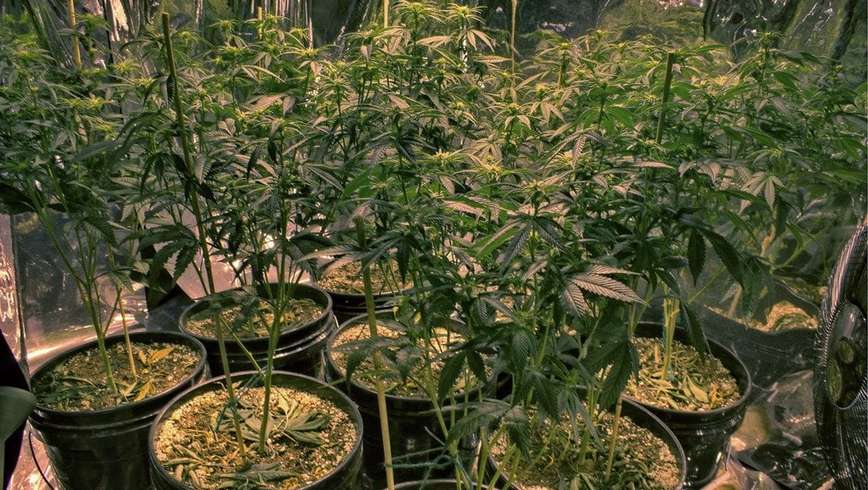
The status of Cannabis Ruderalis remains disputed as some researchers classify Ruderalis as a completely distinct species of Cannabis whereas others debate over Cannabis Ruderalis being a sub-species of Cannabis Sativa. The widely popular opinion is however of Ruderalis being a distinct species of genus Cannabis. Native to Central Europe and Russia, this species of Cannabis is very low in THC concentration.
A Russian botanist named D.E. Janichewsky in 1924 coined the term Ruderalis by deriving it from the Latin word rūdera meaning rubble or lump. Notable differences between Ruderalis and other species of Cannabis include seed, shape, size, leaf structure. The plant is generally smaller than other species.
This species represents the feral type which has less THC and is abundant in CBD. Ruderalis stems are thin with little branching and hardly grow above 2 meters but what sets Ruderalis really apart from other species is its ability to enter the flowering stage regardless of the daylight cycle. Geneticists refer to this as auto-flowering and this is something that is not seen in the Sativa and Indica species,
Industrial Hemp Cannabis Types

Hemp is a type of Cannabis Sativa that is cultivated and harvested for many industrial uses. Hemp and Marijuana, although both variants of the same species, Cannabis Sativa, have a different phytochemical composition. Hemp is naturally low in THC, unlike Marijuana. Thomas Jefferson, the founding father and 3rd President of the United States of America said and we quote;
“Hemp is of first necessity to the wealth and protection of the country.”
Divided into three main categories which include Fiber-rich, Grain rich, and Cannabinoid Rich, Hemp is currently being bred to produce only one of these categories.
Fibre Rich
This type produces long fibers and biomass. Applications include textiles, paper, construction, insulation, fuel, and composites.
Grain Rich
This variety is high in protein, fiber, and fatty acids. Applications mainly include food and nutritional supplements.
Cannabinoid Rich
This particular variety is the most lucrative one right now. CBD and the diverse CBD product mix have taken the market by storm because of the health benefits they promise to provide. If you’re looking to make some profit in the industry, might as well invest in this variety.
Hemp is currently being refined into paper, textile, clothing, biodegradable bags, paints, insulation, biofuels, etc. Not only is it fast-growing, but it also:
Nourishes the land it grows in
Requires almost no water and no maintenance to grow
Is low in THC and abundant in CBD
Male Cannabis Plants
Male Cannabis plants are generally not used for smoking and most growers usually pick them out in the early growing stage in order for them to not hinder the growth of the female plants.
You can differentiate between male and female Cannabis plants for sure during the flowering stage when the female Cannabis plants begin to produce buds and hairs whereas male plants do not. Entering this stage may take about 6 weeks.
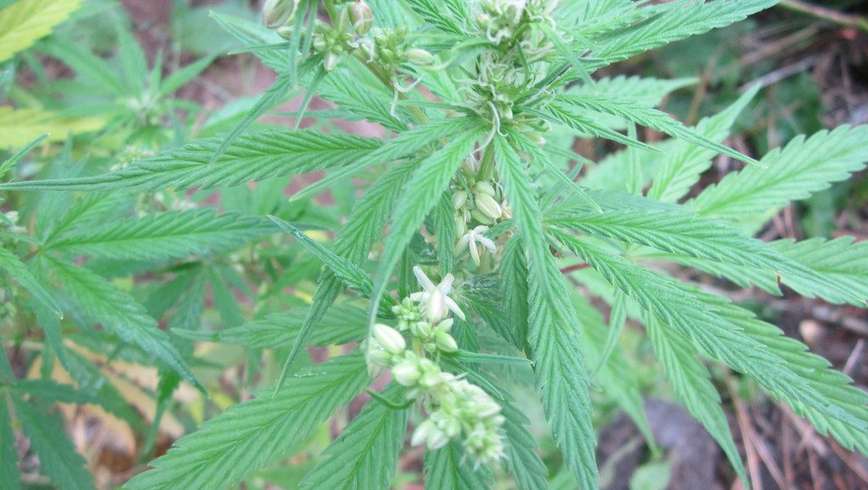
Male Cannabis plants have rounded pollen sacs near the stem during the pre-flowering stage and most professionals can identify a male plant there and then. If allowed to grow the grape-like sacs burst with pollen and pollinate the female plants nearby.
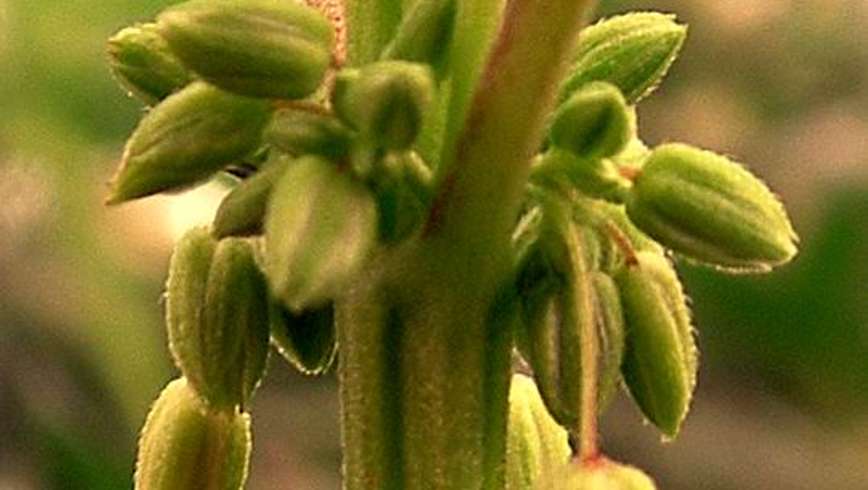
Male Cannabis plants, although unfit for smoking purposes, do ensure a strong genetic line and growers use well-grown male plants for breeding good quality strains. They also are used to produce strong fiber and due to a naturally low percentage of Cannabinoids, also for juicing!
Female Cannabis Plants
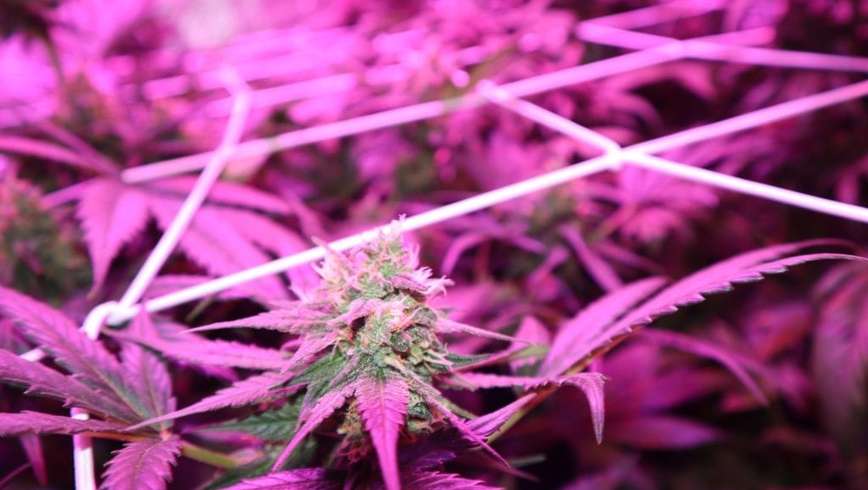
The first identification of a female Cannabis plant is when you see a delay in the plant exhibiting signs of entering the flowering stage. As mentioned above this usually takes about 6 weeks but may take more for females after which they begin growing “pistils” which are small white hairs extending out from elongated bud sacs called the calyx, and which grow to become buds and then flowers.
Female Cannabis plants are rich in Cannabinoids and produce seedless buds (if unpollinated) that are potent and resinous, perfect for smoking.
Hermaphrodite Cannabis Plants
Hermaphroditism in plants refers to the presence of both male and female sex organs on the same plant. This means that the plant is able to produce both female and male gametes. Two causes have been identified so far that can be attributed to this condition. It is either a genetic tendency or environmental stress that leads to hermaphroditism in plants.
Feminized seeds are produced with the help of Hermaphrodite Cannabis plants. Feminized seeds have 90%-99% chance of growing up into a female plant. Shorter growing times and the ease of maintenance are why growers prefer female plants over male ones.
Types of Marijuana Seeds
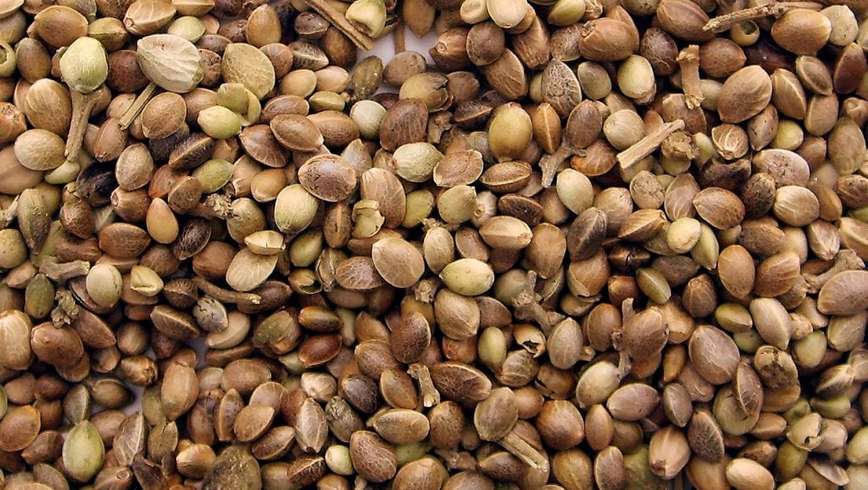
Cannabis seeds
Marijuana seeds have been classified into three main types. Let’s touch upon them briefly before concluding this article.
Regular Cannabis Seeds
The plant that grows from regular cannabis seeds could be both, female or male. There is no way to know prematurely what your seed will grow into. If cultivated and grown in ideal conditions, the likelihood of your seed turning out to be a female plant increases significantly.
Feminized Cannabis Seeds
As discussed above, these seeds are genetically altered and obtained from hermaphrodite cannabis plants. The genetic alteration enables the seed to grow into a female plant in 90%-99% of cases. (Male plants are generally undesirable because they do not flower, contain less THC, and can even affect the growth of female plants in their vicinity).
Auto-Flowering Cannabis Seeds
Autoflowering cannabis seeds are a product of Indica or Sativa bred with Ruderalis. Ruderalis has the ability to flower regardless of the daylight cycle, making it a promising candidate for commercial purposes. Its fast blooming ability (within 2-3 weeks) combined with high concentrations of cannabinoids found in Sativa and Indica is also what renders it a favorite among cannabis growers.

Jake Randall is a journalist, author, and University of Guelph Alumni with expertise in all things cannabis, along with knowledge in economics, the environment, and everything in between. Originally from just outside Toronto Canada, Jake has taken on the role of a senior cannabis correspondent at The Cannabis School.
Comments
When growing a sativa dominant auto-flowering in a grow tent, what type if light is recommended for the growth cycle?
I’m looking for information to educate myself on how to get into baking edibles and making jam. I’m also looking for class to understand and knowledge on the measurements of the THC or CBD to put into the pastries and jam.
Add a comment
This will be publicly visible.
Your email address will not be published.
Your comment will be reviewed by the admin before it is published.

